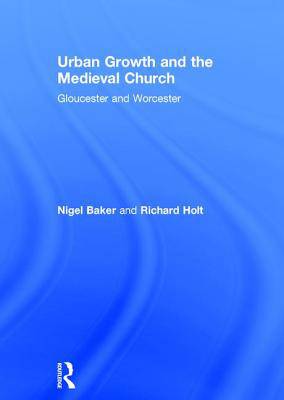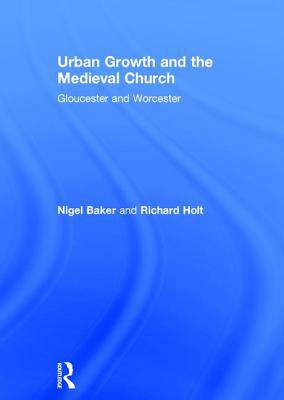
Je cadeautjes zeker op tijd in huis hebben voor de feestdagen? Kom langs in onze winkels en vind het perfecte geschenk!
- Afhalen na 1 uur in een winkel met voorraad
- Gratis thuislevering in België vanaf € 30
- Ruim aanbod met 7 miljoen producten
Je cadeautjes zeker op tijd in huis hebben voor de feestdagen? Kom langs in onze winkels en vind het perfecte geschenk!
- Afhalen na 1 uur in een winkel met voorraad
- Gratis thuislevering in België vanaf € 30
- Ruim aanbod met 7 miljoen producten
Zoeken
Urban Growth and the Medieval Church
Gloucester and Worcester
Nigel Baker, Richard Holt
Hardcover | Engels
€ 182,45
+ 364 punten
Omschrijving
It has long been recognised that the Church played a major role in the development of towns and cities from the earliest times, a fact attested to by the prominence and number of ecclesiastical buildings that still dominate many urban areas. Yet despite this physical evidence, and the work of archaeologists and historians, many important aspects of the early stages of urbanization in England are still poorly understood. Not least, there are many unanswered questions concerning the processes by which the larger towns emerged as planned settlements during the pre-Conquest centuries. Whilst the commitment of the Wessex kings is recognized, questions remain concerning the participation of the Church in this process. Likewise, our understanding of the Church's influence in the later development of towns is not yet fully developed. Many intriguing questions remain concerning such issues as the founding of parish churches and their boundaries, and the extent to which the Church, as a major landowner, helped shape the evolving identity of towns and their suburbs. It is questions such as these that this volume sets out to answer. Employing a wealth of historical and archaeological evidence, two key towns - Gloucester and Worcester - are closely examined in order to build up a picture of their respective developments throughout the medieval period. Through this multi-disciplinary and comparative approach, a picture begins to emerge the Church's role in helping to shape not only the spiritual, but also the social, economic and cultural development of the urban environment.
Specificaties
Betrokkenen
- Auteur(s):
- Uitgeverij:
Inhoud
- Aantal bladzijden:
- 449
- Taal:
- Engels
Eigenschappen
- Productcode (EAN):
- 9780754602668
- Verschijningsdatum:
- 26/03/2004
- Uitvoering:
- Hardcover
- Formaat:
- Genaaid
- Afmetingen:
- 175 mm x 246 mm
- Gewicht:
- 1049 g

Alleen bij Standaard Boekhandel
+ 364 punten op je klantenkaart van Standaard Boekhandel
Beoordelingen
We publiceren alleen reviews die voldoen aan de voorwaarden voor reviews. Bekijk onze voorwaarden voor reviews.









